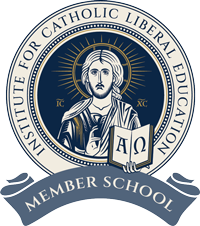Mission
To furnish students with an outstanding Classical education informed by the wisdom of the Catholic intellectual and spiritual tradition. We provide a rigorous Liberal Arts curriculum that gives our students a firm foundation in faith and morals. By these means, we strive to form students who have a genuine love of God and the Church and who are prudent, compassionate, kind, courageous, and generous in their service of one another and to others.
School Motto
Fides et Ratio
Meaning “Faith and Reason,” our motto extols the integration of these two human faculties to form the completeness of knowledge that man needs in order to know both himself and his maker.
Philosophy
We are committed to Classical education.
As a Catholic school, STCS strives:
- to impart a robust knowledge of the Catholic Faith through the study of Sacred Scripture Liturgy, Theology, and moral reasoning
- to cultivate a deep love for God and His Church
- to introduce students to the practice of the spiritual and corporal works of mercy
As a Classical school, STCS promotes:
- Liberal Arts education
- a literary approach to learning marked by the Great Books tradition
- extensive Music education
- a Latin-centered curriculum
- an engaging Art instruction program for all grades
- Physical Education and sports as vital to the goal of educating mind, heart, and body



